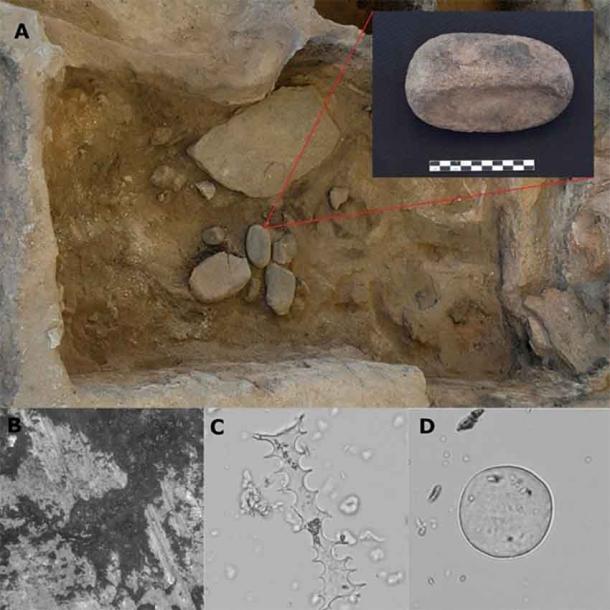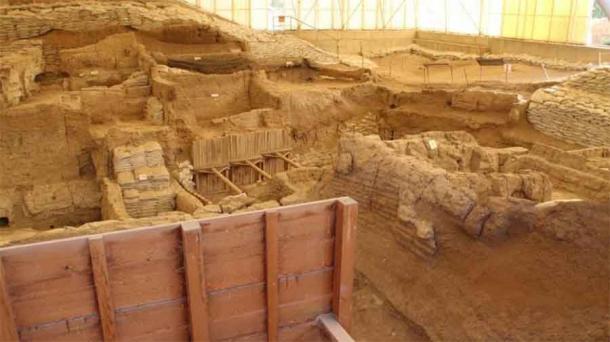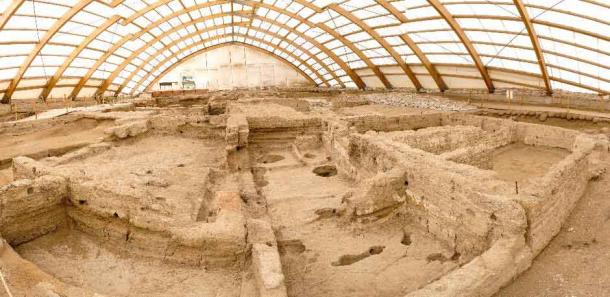The massive Neolithic and Chalcolithic proto-city site of Çatalhöyük in Anatolia, Turkey was a flourishing center between 7100 BC and 5700 BC, and it attained the status of a UNESCO World Heritage Site in 2012. Now it is making archaeological headlines once again for amazing discoveries made during excavations and research.
Excavations being carried out by researchers from Anadolu University have revealed a second neighborhood. Researchers from the UPF Culture and Socio-Ecological Dynamics research group (CaSEs) and the University of Leicester, UK are also working on discoveries at the site, focusing on the importance of unknown wild plant resources.

Çatalhöyük, Turkey. ( GeniusMinus /Adobe Stock)
The Development of Settled Agriculture
The plant resource study, published in an open-access format in the June edition of PLOS ONE , reveals that the three-decade long excavation project, which began in the early ‘90s, has “unearthed rich archaeobotanical remains and a diverse ground stone assemblage produced by what once was a vibrant farming community.” This has furthered the understanding of crop and plant processing and produced a rich micro botanical assemblage.

A) Set of stone tools, storage area of building 52; B) Use-wear trace observed on the surface of stone
implements; C) Wheat inflorescence phytolith; D) Wheat starch grain. (Credit: UPF)
Prior study of agricultural resource practices and the use of plant resources has always relied on the study of charred remains, which occur causally as a result of cooking or due to accidental fires, but this is riddled with limitations in its scope. “We recovered residues trapped in the pits and crevices of these stone artefacts that date back to the time of being used, and then carried out studies of microbotanical remains and thus reveal what types of plants had been processed with these artefacts in the past,” says C.G. Santiago-Marrero, a predoctoral researcher with the CaSEs research group of the Universitat Pompeu Fabra – Barcelona (UPF) Department of Humanities.
His research group used an innovative approach based on the ‘analysis of microscopic remains taken from grinding implements from three domestic contexts, attributed to the Middle (6,700-6,500 BC) and Late (6,500 -6,300 BC) periods of occupation,’ Archaeology News Network reports. What they discovered was two-fold: firstly, the community was based on an agricultural economy, growing cereals and vegetables – like wheat, oats, peas; secondly, there continued to be much ‘exploitation of wild resources outside the spectrum of domestic resources, which had not yet been found at this site’.
The Discovery of a Second Neighborhood and Food Habits
That is not all, however, as a new, second neighborhood has also been located during excavations, according to Daily Sabah .
One of the oldest settlements in ancient human civilization (considering that the agricultural revolution was around 10,000 BC), Çatalhöyük was discovered in the 1960s, and the current excavation project began in 1993 under the aegis of Stanford University Professor of archaeology and British national Ian Hodder in 1993. Ali Umut Türkcan, associate professor from Anadolu University and the head of the Çatalhöyük Neolithic site excavations, has said that they have discovered a street in the newly excavated area – this is the location of the second neighborhood.

A view of the second neighborhood uncovered at Çatalhöyük. ( Aksam)
“We found a street in the newly excavated area, and we are even uncovering a second neighborhood. The more opportunities we are given, the more we will be able to uncover,” Türkcan said, pointing out that only 6 percent of Çatalhöyük has been excavated so far. “Çatalhöyük is an important settlement that will respond to the interest shown by Turkey. It is mentioned as the first city in the history of urbanization since the 1960s.” Türkcan also explained:
“Recently, we started to think of this place as just a settlement, but his needs to be reconsidered. It is possible to say that this is a center that started an urban culture not only with its size and population but also with its assets and culture. Once again, we need to consider it as the beginning of urban culture. We need to discuss this not only with archaeologists but with all social scientists.”

Çatalhöyük was one of the world’s first urban centers. ( GeniusMinus /Adobe Stock)
Research Conducted on Çatalhöyük
This site, subject to various kinds of studies and research, housed multiple urban centers, primarily Çatalhöyük East and Çatalhöyük West, and dense housing clusters on alluvial clay mounds. This period has been associated with the development of pastoral complexes and animal domestication co-existing with traditional hunting. Over an area of 34 acres, a population of 3,000-8,000 people stayed in square, mud-brick houses in a cellular agglomeration.
Earlier this year, another study conducted by Newcastle University of the UK showed “that domestic burning of wood and dung fuels in Neolithic homes would have exceeded modern internationally agreed standards for indoor air quality, exposing inhabitants to unsafe levels of particulates”.
Interestingly, the dense clustering meant that general movement actually occurred over a series of interconnected ladders across the roofs, to reach an entrance at roof level, reports Heritage Daily . This seemingly egalitarian society witnessed a transition into the Bronze Age around 5700 BC, which was associated with mass abandonment of the site – there are several theories behind this. Some experts believe that climate change occurred , leading to a disruption in agricultural farming. Others believe that there was a failure in the egalitarian structure owing to resources becoming scarce and ensuing internal violence, which cause an overall societal breakdown.
Noting that people learned to live, produce, and defend together at the site, Mayor Uğur İbrahim Altay said:
“Çatalhöyük is the place where the fire was used to cook meals for the first time, making it a very important cultural heritage for us in that regard. As the Metropolitan Municipality, we are making important investments to promote Çatalhöyük. When visitors start coming, our welcome center will serve them. Another reason why we care about Çatalhöyük is that Konya is a city that has managed to protect this ancient city for 10,000 years and has passed it down genetically from generation to generation.”
Many tourists have been interested in visiting Çatalhöyük and the new discoveries are sure to inspire even more people to see the site.
Top image: A view of Çatalhöyük, Turkey. Source: Hurriyet Daily News
By Rudra Bhushan
Related posts:
Views: 0
 RSS Feed
RSS Feed

















 July 18th, 2021
July 18th, 2021  Awake Goy
Awake Goy  Posted in
Posted in  Tags:
Tags: 
















